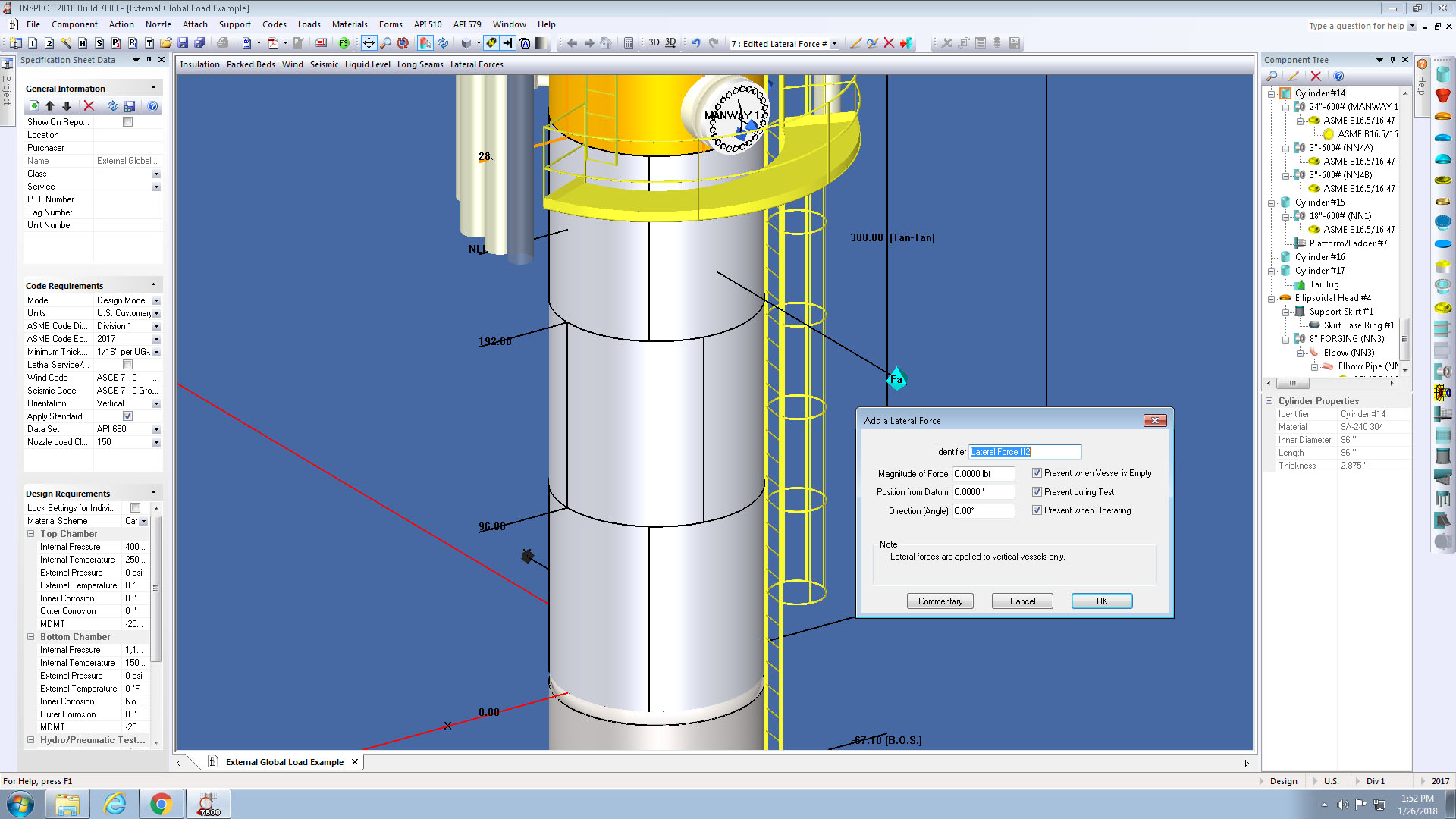

Unfortunately, at the time of writing this article MecaStack does not do these checks automatically, but perhaps someday this will be included. Some of these codes might also estimate static equivalent loads and with these loads one could concievably estimate a tensile stress in the bolts. Depending upon which vortex shedding criteria within MecaStack is being followed, some of the design codes estimate the number of cycles expected. This gives designers some specific guidance on determining when pretension might be necessary. When the maximum fatigue stress range is less than the threshold fatigue stress range, 7 ksi, anchor rods need not be further checked for fatigue. The AISC Design Guide “Base Plate and Anchor Rod Design” once again provides some guidance on this topic:Ĭolumn base connections subject to more than 20,000 repeated applications of axial tension and/or flexure must be designed for fatigue. With most stacks, if vortex shedding has been adequately addressed by using a damper, strakes, etc., then the cylical loading will be minimal. The most common form of cyclical loading on a stack would be due to wind induced vibration (vortex shedding). We need better criteria to determine exactly when pretension is really necessary. Specifying pretension dictates that a sleeve be installed with the anchor bolts, and that is not always going to be feasible or desireable. This can be a problem logistically, because often the engineer designing the stack does not necessarily design the foundation. If pretensioning is desired and specified, then we believe it is imperative that the anchor bolt be designed with a pipe sleeve as shown to the right. If there is not a steel sleeve installed in the foundation, then there is really not a good reason to pretension the anchor bolts since it’s unlikely that the pretension will be maintained anyway. This is a very good point, and in our opinion one of the most important determining factors. Thus, it is recommended, when is necessary to pretension an anchor rod, that a steel sleeve be used that is adequate to transfer the anchor rod pretension from the anchor plate to the baseplate. long, it only takes concrete creep/shrinkage of 0.05 in to relieve all pretension. Pretensioning the rod can improve it’s fatigue life, but anchor rods can effectively be pretensioned only against steel. In AISC Steel Design Guide 1 “Base Plate and Anchor Rod Design” 2nd edition, they state the following: The cookie is used to store the user consent for the cookies in the category "Analytics".Reading the guidelines above, it would seem that for tall stacks pretension would always be desirable. This cookie is set by GDPR Cookie Consent plugin. These cookies ensure basic functionalities and security features of the website, anonymously. Necessary cookies are absolutely essential for the website to function properly. November 24th: No Webinar (Thanksgiving Holiday) November 17th: Pipe Support Engineering & Design Webinar 10:00 am OR 2:00 pm Bellows – Expansion Joints In-depth Webinar 10:00 am Gain knowledge of the valuable tips used when deciding to replace or re-calibrate a variable spring support, as well as adjustments, shutdown, and isolation procedures.
#PRESSURE VESSEL ANCHOR BOLT DESIGN HOW TO#
View examples of failed supports provided by our Field Service Division and learn why they failed and how to prevent it. Learn about the different attachments, testing, and installation and maintenance procedures. Discover the basic steps in selecting a hanger design and the step-by-step process used to size a spring for your application. View how the different coil configurations produce a unique response to an applied load and see how a spring assembly is loaded.

Learn about the special features available, in addition to the design of a variable support.

This Webinar will focus on the different types of variable spring supports and big ton variable spring supports.
#PRESSURE VESSEL ANCHOR BOLT DESIGN PROFESSIONAL#
Live Webinars are 1 PE/PDH Credit for TX Professional Engineers Variable Spring Support Design, Size Selection, Installation & Maintenance Webinar Date: Thursday, Novem– Register for 10:00 am OR 2:00 pm *Note: Time Zone is CDT * Central Daylight Savings Time / GMT -5h


 0 kommentar(er)
0 kommentar(er)
